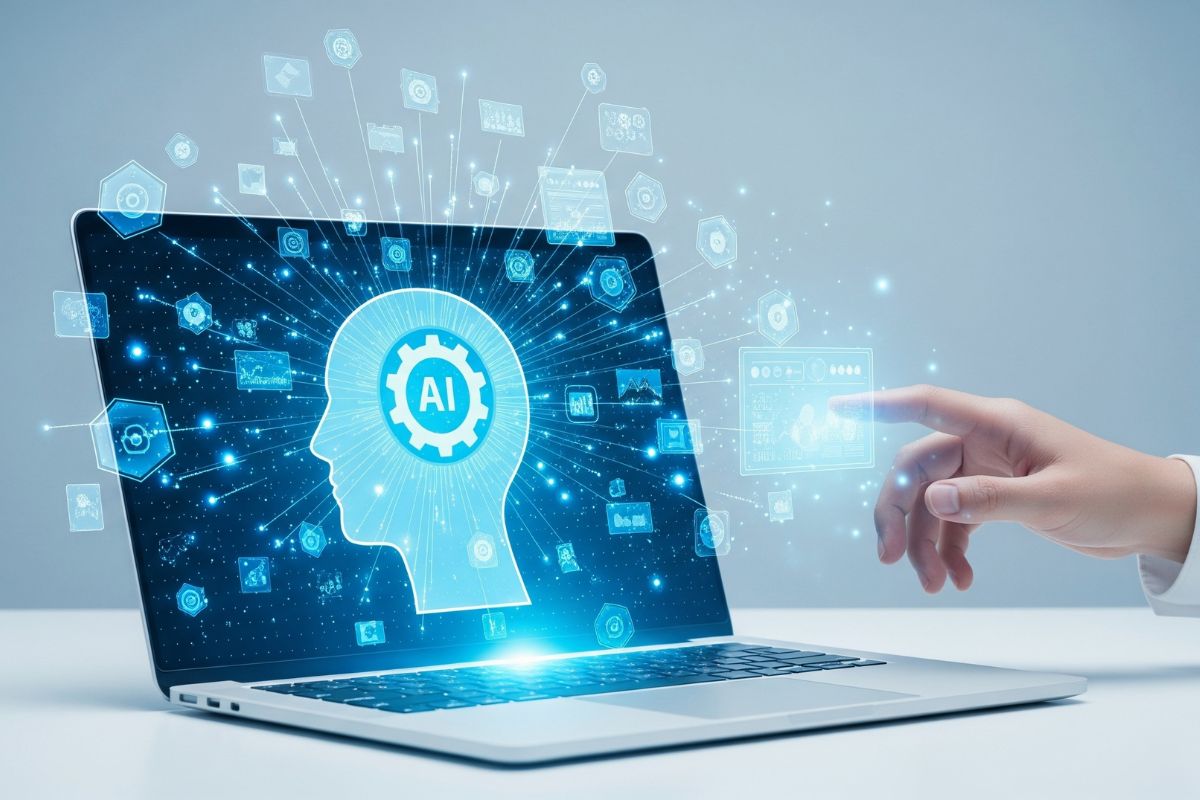AI-powered tools have surged into everyday workflows, promising to automate routine work and boost output. Companies around the world invest heavily in AI: McKinsey estimates AI could add roughly $4.4 trillion in productivity gains to the global economy. Indeed, recent surveys find that about 75% of workers were using AI at work by 2024, and most report tangible time savings. For example, many tasks that once took hours can now be done in minutes: one study notes generative AI can improve a knowledge worker’s performance by roughly 40%. At the same time, business leaders overwhelmingly expect productivity benefits from AI. As a result, a wide array of AI “assistants” and automation tools – from chatbots and writing aids to schedulers and data analyzers – have emerged for both individuals and teams.
Categories of AI Tools
AI productivity tools fall into several broad categories. Common examples include:
-
Task Automation & Scheduling: Apps that automate workflows and manage calendars (e.g. Zapier, Reclaim, Clockwise).
-
Writing & Content Assistants: Language AIs and editors for drafting emails, documents, or marketing copy (e.g. ChatGPT, Jasper, Grammarly).
-
Meeting and Note-taking Aids: Tools that record meetings, transcribe speech, and summarize key points (e.g. Otter.ai, Fireflies.ai).
-
Code Generation & Development: AI assistants that help write, complete, or review code (e.g. GitHub Copilot, Tabnine).
-
Data Analysis & BI Tools: Platforms that use AI to analyze data, generate charts, and surface insights (e.g. Microsoft Power BI with Copilot, Tableau AI).
Each category streamlines specific tasks. For instance, task automation tools connect multiple apps and automatically perform routine work (like moving data between systems or scheduling tasks). Writing assistants use large language models to generate or polish text, helping overcome writer’s block. Meeting aids capture conversation and turn it into searchable notes and summaries, so no one has to furiously scribble. Code tools autocomplete and suggest code based on context, speeding development. And AI data platforms let non-experts query and visualize data by typing questions in natural language, translating complex datasets into decisions.
Task Automation & Scheduling
AI-driven automation platforms help users eliminate manual tasks. Tools like Zapier, IFTTT, and Microsoft Power Automate connect different apps so that actions in one can trigger actions in another (for example, automatically saving email attachments to cloud storage or notifying Slack when a spreadsheet updates). Calendar assistants such as Reclaim or Clockwise scan your schedule and automatically arrange meetings around your high-priority tasks. By learning your routines, they “defend” focus time and reorganize low-priority items (saving hours of manual scheduling). These systems reduce busywork – freeing you to focus on meaningful work.
Writing and Content Assistants
Modern writing assistants use AI to draft, revise, or brainstorm text. Chatbots like ChatGPT (based on large language models) let you ask questions or provide prompts and get full paragraphs of text in reply. For example, ChatGPT can write marketing copy, summarize research, or draft professional emails on demand. Dedicated content tools like Jasper AI or Copy offer templates for blog posts, ads, or social media content, often customizable to your brand’s tone. Grammar and style checkers such as Grammarly now include generative features: they automatically correct grammar and suggest clearer phrasing or even complete your sentences. Overall, these AI assistants help overcome writer’s block and accelerate content creation.
Meeting Summarizers and Note-Taking
AI meeting assistants act like digital note-takers. They record your conference calls or video meetings, transcribe the audio into text, and then apply AI to summarize the discussion. For instance, tools like Otter or Fireflies automatically identify speakers, highlight key topics, and even extract action items from a meeting. The result is a concise, searchable summary and to-do list for every meeting. This means participants can focus on the conversation rather than scribbling notes. By capturing the full transcript, these tools also prevent lost details: you can later search the notes for a particular decision or quote. In short, AI meeting assistants streamline meeting follow-up and collaboration by ensuring nothing important is overlooked.
Code Generation and Development Tools
AI is reshaping software development. AI coding assistants like GitHub Copilot and Tabnine integrate with code editors to suggest full lines or blocks of code as you type. These tools learn from billions of lines of code and your project context, enabling them to autocomplete functions, write tests, or even detect bugs. In practice, many developers find Copilot significantly speeds up their work. Indeed, a GitHub study found that over 90% of surveyed developers agreed Copilot helped them complete tasks faster. By offloading repetitive boilerplate, these AI helpers let programmers concentrate on complex problem-solving. (Of course, outputs must be reviewed for correctness – AI can suggest insecure or erroneous code if unchecked.) Overall, AI dev tools make prototyping and coding more efficient.
Data Analysis and Insights Tools
AI-enhanced analytics platforms put sophisticated data analysis within reach of ordinary users. For example, BI tools like Tableau AI or Microsoft Power BI with Copilot allow you to ask questions of your data in plain English. The AI then generates relevant charts, dashboards, and forecasts automatically. A marketing manager could, for instance, ask “which product category had the largest sales growth last quarter?” and receive an immediate visual report. Similarly, Google’s Duet AI in Sheets helps create formulas and insights from spreadsheet data. These AI BI tools uncover patterns and predictions without requiring users to write complex queries. By turning data into actionable insights, they accelerate decision-making across teams.
Practical Examples of AI in Action
-
Personal Productivity: Many individuals use AI in daily life. For example, someone might ask a chatbot to draft a cover letter or plan a travel itinerary, saving hours of typing. Voice assistants like Siri/Alexa use AI to set reminders or send texts by voice. AI calendar apps automatically organize personal schedules to avoid conflicts. A student might use an AI note-taking app to summarize a lecture. These AI helpers let individuals finish common tasks faster (studies show AI content tools can boost writing productivity by ~60%).
-
Business Productivity: In the enterprise, AI is embedded into many roles. Customer support teams use AI for faster ticket resolution: for instance, Iron Mountain uses Salesforce’s Einstein AI to suggest canned responses and relevant knowledge-base articles, enabling agents to close cases much faster. Sales teams leverage AI-driven CRM tools (like Salesforce Einstein or BoostUp) to analyze pipelines and predict which deals will close, helping reps focus on the best opportunities. Marketing departments employ AI writers (Jasper, Copy.ai) to generate email campaigns and ad copy at scale with consistent branding. Engineering groups rely on Copilot and Tabnine for coding: developers report that Copilot helps them stay focused and get more done (one study found teams using Copilot completed tasks faster and with higher success rates). Even data analysts use AI assistants: for example, CEOs might ask a BI tool to summarize company performance, getting instant charts and key takeaways. In short, both individuals and organizations across functions find AI tools indispensable for saving time and improving outcomes.
Tips for Integrating AI Tools
-
Start small with high-impact tasks. Pilot an AI tool on a simple, non-critical workflow first (for example, automating just your weekly report or one meeting’s notes). This lets you learn its strengths and limitations before scaling up.
-
Train users and document best practices. Provide examples, tutorials, or quick guides on how to prompt the AI or use its features. Hands-on training builds confidence and buy-in so people understand the tool’s value.
-
Keep humans in the loop. Always review AI outputs. Encourage employees to double-check summaries, edits, or decisions suggested by AI. A “human+AI” approach combines speed with judgment, preventing mistakes if the AI hallucinates or misinterprets.
-
Integrate seamlessly with existing workflows. Connect AI tools to the apps you already use. For instance, link your chatbot to your email system or CRM, or use automation platforms (Zapier, Power Automate) to weave AI features into your task pipelines. This avoids fragmented tools and maximizes efficiency.
-
Monitor performance and ROI. Track metrics like time saved, error reduction, or output quality before and after AI adoption. Regularly assess whether the tool is delivering value and refine your usage (adjust prompts, settings, or workflows) accordingly.
-
Prioritize data privacy and security. Only feed non-sensitive data to cloud AI services, and ensure compliance (GDPR, HIPAA, etc.) when handling proprietary or personal information. Confirm that tools meet your organization’s security standards to protect confidential data.
Conclusion
AI productivity tools offer enormous potential to automate routine work and amplify human efforts. Many organizations already report substantial efficiency gains from AI, and the technology continues to improve. By delegating busywork (scheduling, note-taking, drafting, code boilerplate, data crunching) to AI, people can focus on higher-level thinking and creativity. However, AI is not infallible. Experts caution that AI tools can hallucinate (produce confidently wrong information) and may mishandle sensitive data. Over-reliance without oversight can lead to errors or compliance risks. Therefore, it’s crucial to use AI as an assistive resource: validate its outputs, keep humans in control, and apply sound judgment.









